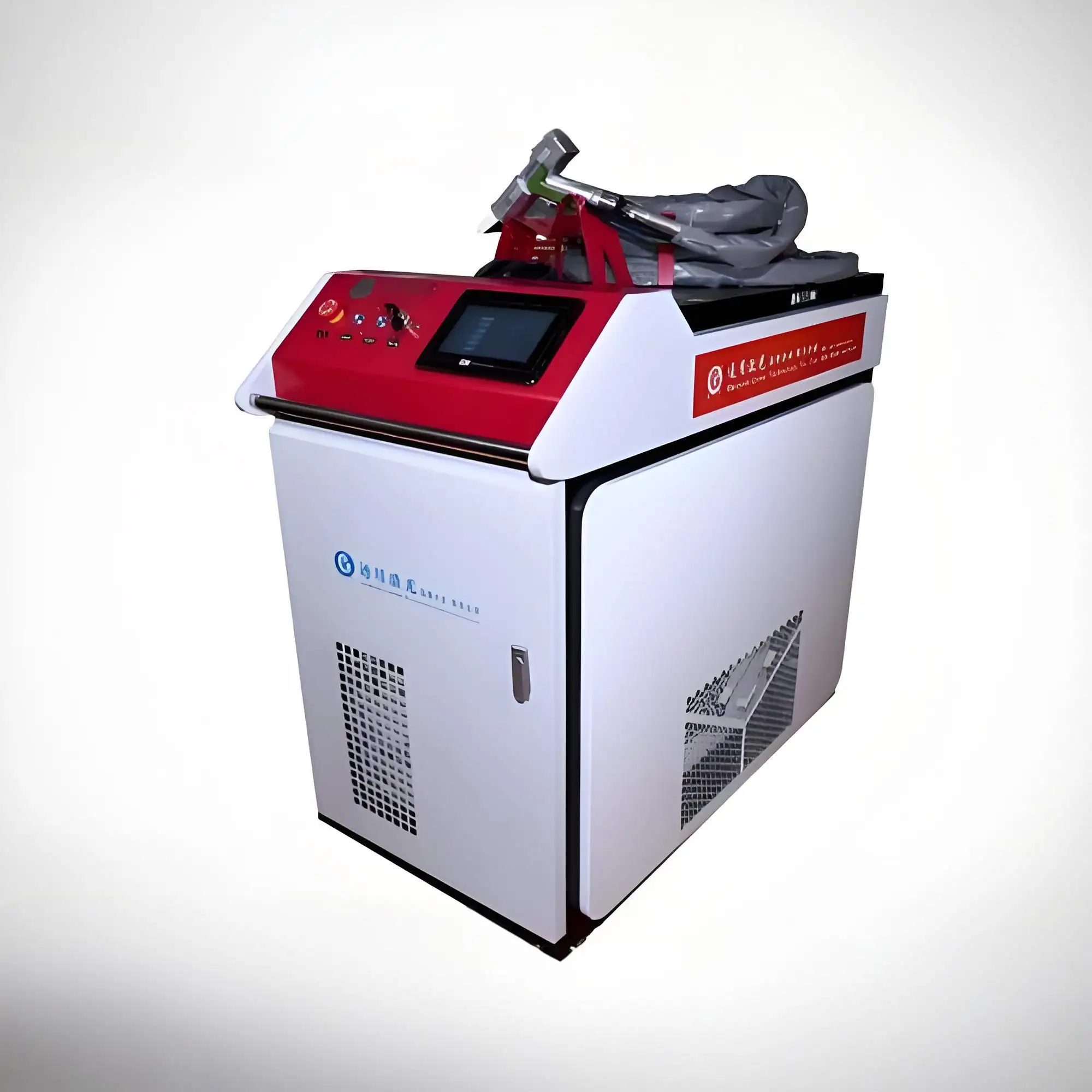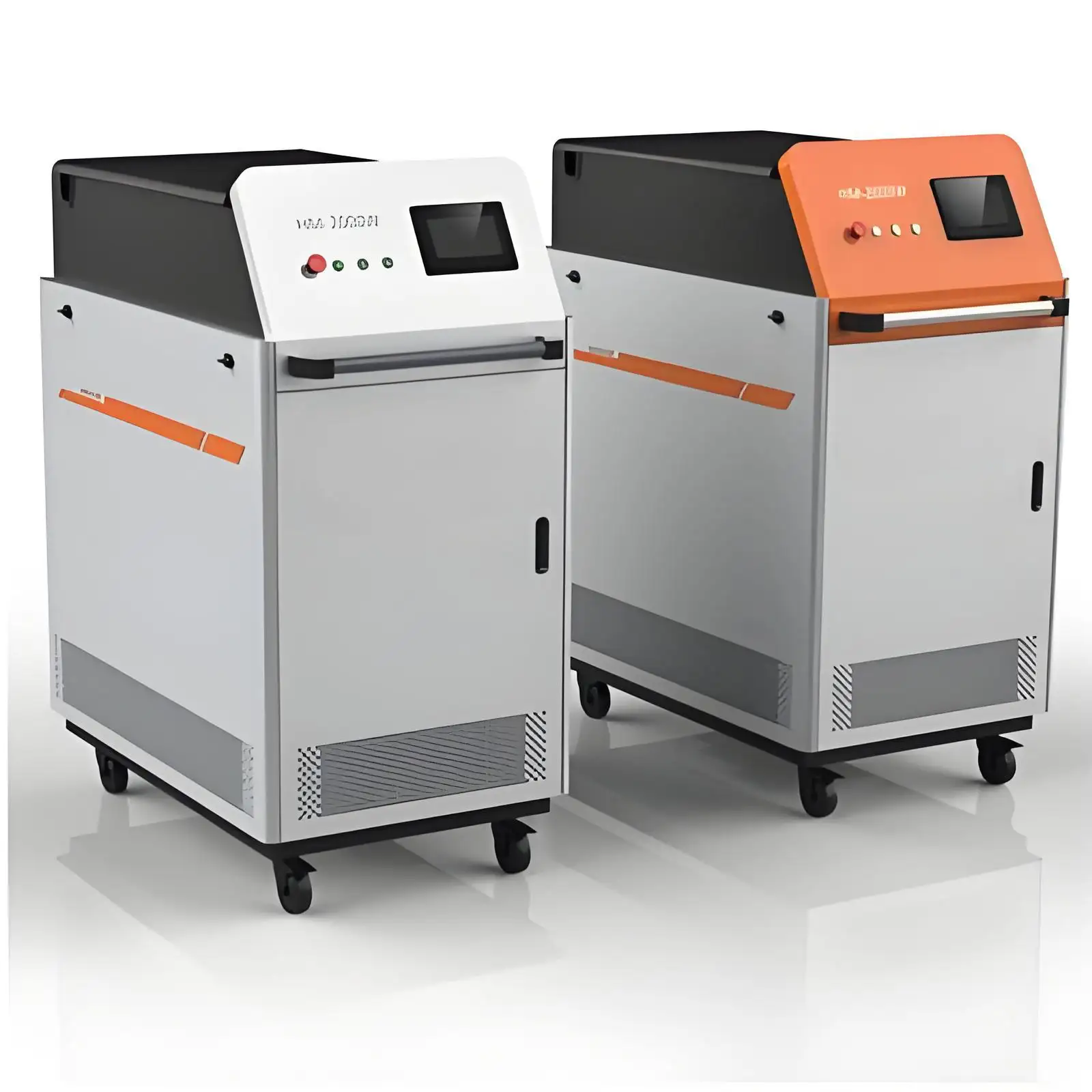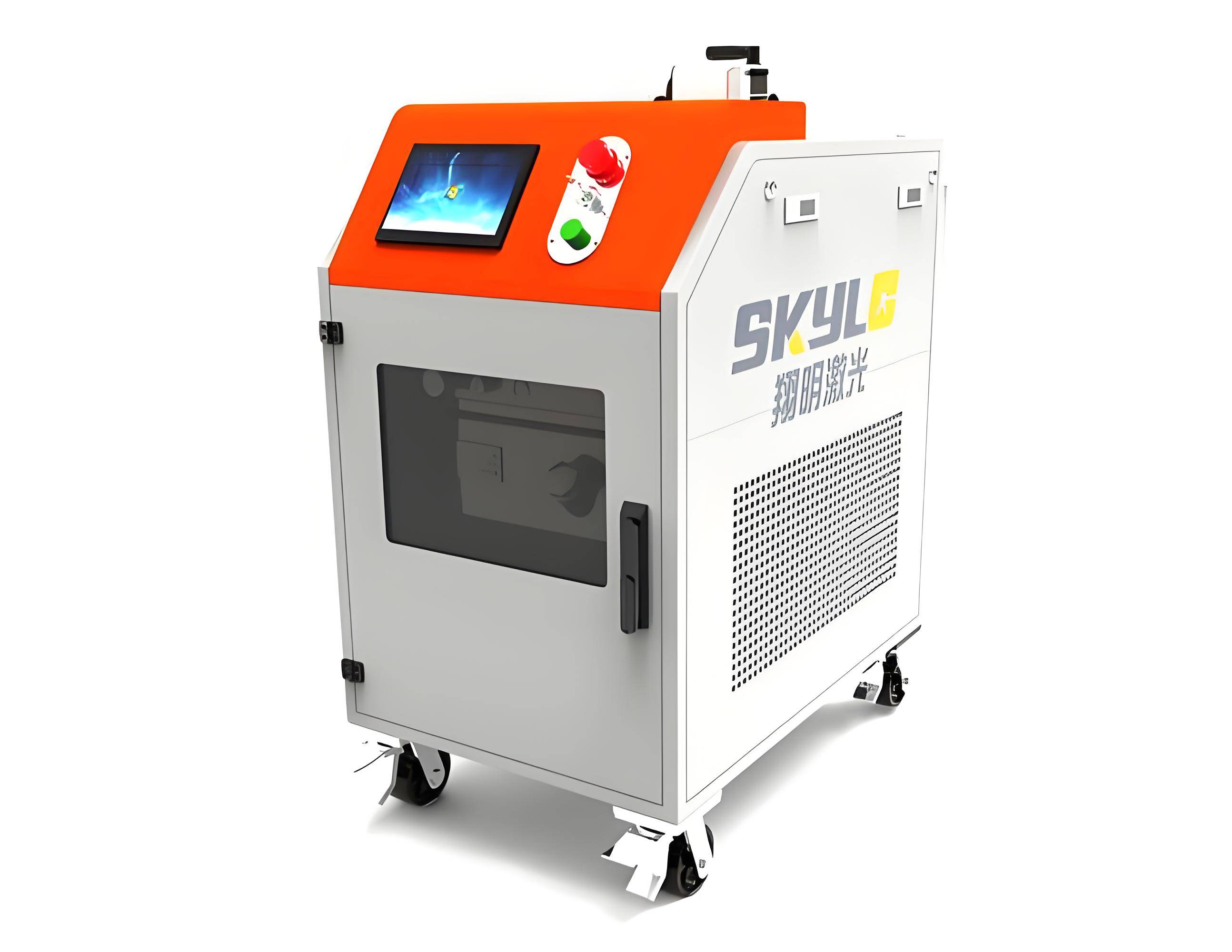As someone who’s spent years working with industrial laser technologies, I’ve seen how laser rust removal machines are revolutionizing maintenance across various sectors, and the railway industry is no exception. Railways are the backbone of transportation in many countries, but their infrastructure—trains, tracks, and components—faces constant wear from rust and corrosion due to exposure to harsh weather and heavy use. Maintaining these assets is critical to ensure safety, efficiency, and longevity. Over the years, I’ve consulted with railway operators and seen firsthand how laser rust removal is becoming a go-to solution for tackling corrosion. In this article, I’ll explore the key applications of these machines in the railway industry, their benefits, challenges, and what you need to know to implement them effectively.

Why Laser Rust Removal Matters in Railways
Rust is a persistent enemy in the railway industry. From train car exteriors to track components, corrosion can compromise safety, increase maintenance costs, and lead to downtime. Traditional methods like sandblasting or chemical treatments are labor-intensive, messy, and often environmentally harmful. Laser rust removal machines, on the other hand, use high-powered lasers to vaporize rust, paint, or contaminants without damaging the underlying material. They’re precise, eco-friendly, and increasingly popular in rail maintenance.
I recall visiting a rail depot in the Midwest where the maintenance team was struggling with rust on aging freight cars. They switched to a 1000W laser cleaner, and the lead technician told me it cut their cleaning time by half while producing no hazardous waste. That kind of impact is why railway operators are turning to this technology. Let’s dive into the specific ways laser rust removal is being used in the industry.
Key Applications of Laser Rust Removal Machines in Railways
Laser rust removal machines are versatile tools that address a range of maintenance challenges in the railway sector. Here are the primary applications I’ve seen in my work:
1. Cleaning Train Car Exteriors
Train cars, whether freight or passenger, are exposed to rain, snow, and pollutants that cause rust on steel and aluminum surfaces. Laser rust removal is used to:
Remove rust and oxidation from car bodies, restoring their appearance and structural integrity.
Strip old paint for repainting or inspections without damaging the metal.
Clean welded seams to ensure strong, corrosion-free joints.
I’ve seen portable laser cleaners, like the CleanTech LPC-1000, used on train exteriors in depots. The precision allows technicians to target rusted areas without affecting nearby paint or coatings, which is a big advantage over abrasive methods.

2. Maintaining Rail Tracks and Components
Rail tracks and their components—fishplates, bolts, and fasteners—are prone to rust due to constant exposure to moisture and temperature changes. Laser rust removal is applied to:
Clean rust from track surfaces, improving conductivity for signaling systems.
Restore fasteners and bolts, ensuring secure connections and reducing derailment risks.
Prepare tracks for welding or inspections by removing corrosion and debris.
A rail maintenance crew I worked with used a P-Laser QF-500 to clean rusted track sections before ultrasonic testing. The laser’s speed and precision meant they could cover more track in less time compared to grinding.
3. Refurbishing Rolling Stock Components
Critical components like wheelsets, axles, and bogies are susceptible to rust, especially in older trains. Laser rust removal is used to:
Clean wheel surfaces to improve traction and reduce wear.
Remove corrosion from axles to prevent fatigue cracks.
Prepare components for non-destructive testing (NDT) by ensuring a clean surface.
I once helped a railway operator integrate a Laserax Shotblast into their workshop for wheelset maintenance. The system’s automated scanning cleaned wheels in minutes, allowing them to process more units per shift.
4. Restoring Historical Trains and Museum Pieces
Railway museums and heritage lines use laser rust removal to preserve historical locomotives and cars. The technology’s non-abrasive nature is ideal for delicate or rare materials, like vintage steel or brass. Applications include:
Removing rust from locomotive bodies without damaging original paint or patina.
Cleaning intricate parts, like valve gears or decorative fittings.
Preparing surfaces for restoration without altering historical integrity.
A museum I consulted for used a low-power laser cleaner to restore a 19th-century steam engine. The curator was thrilled that the laser preserved the engine’s original markings, something sandblasting would have obliterated.

5. Cleaning Infrastructure and Facilities
Beyond trains and tracks, railway infrastructure like bridges, signal boxes, and station structures also suffers from rust. Laser rust removal is used to:
Clean steel girders on bridges to prevent structural weakening.
Remove corrosion from signal equipment, ensuring reliable operation.
Maintain platform railings and other metal fixtures for safety and aesthetics.
I’ve seen portable laser units deployed on railway bridges, where their mobility and lack of waste made them ideal for on-site work in challenging environments.
Benefits of Laser Rust Removal in Railways
The railway industry is adopting laser rust removal for its unique advantages over traditional methods. Here’s why it’s a game-changer:
Precision and Non-Destructive
Lasers target rust without damaging the underlying metal, which is critical for safety-critical components like axles or tracks. This precision reduces the risk of over-removal, which can weaken parts.
Eco-Friendly and Waste-Free
Unlike sandblasting or chemical treatments, laser cleaning produces no hazardous waste or dust. This is a big plus for railways operating in urban areas or under strict environmental regulations. A depot manager I worked with noted that switching to lasers eliminated their waste disposal costs.
Speed and Efficiency
Laser cleaners can remove rust in seconds, significantly faster than manual grinding or blasting. For example, a 2000W laser can clean a rusted rail section in under a minute, boosting productivity in maintenance yards.
Safety Improvements
Lasers eliminate the need for abrasive media or toxic chemicals, reducing risks to workers. Class 1 enclosures and safety sensors further enhance operator safety, making lasers suitable for busy depots.
Versatility
From portable handheld units to automated robotic systems, laser cleaners adapt to various railway applications, from small components to large infrastructure.

Challenges of Using Laser Rust Removal in Railways
While the benefits are compelling, there are challenges to consider:
High Initial Costs
Laser rust removal machines are expensive, with prices ranging from $20,000 for portable units to $100,000+ for automated systems. For smaller rail operators, this can be a barrier. I’ve seen clients lease equipment to spread costs over time.
Training Requirements
Operating a laser cleaner requires specialized training to ensure safety and effectiveness. Improper settings can damage surfaces or reduce efficiency. I’ve conducted training sessions where technicians needed a full day to master the controls.
Power and Infrastructure Needs
High-power lasers (e.g., 1000W or more) require robust electrical systems, often 208–240V. Remote rail sites may need generators, adding to costs. A rural rail operator I worked with had to invest in a portable power unit for field work.
Surface Variability
Railway components vary in size, shape, and rust severity, which can complicate laser settings. Automated systems with 3D vision help, but manual adjustments may still be needed for irregular parts.
Safety Regulations
Lasers are classified as Class 4 devices, requiring strict safety protocols like protective eyewear and enclosed work areas. Ensuring compliance can be complex, especially for on-site work.

Comparison Table of Laser Rust Removal Applications in Railways
Here’s a table summarizing the key applications and their considerations:
|
Application |
Use Case |
Benefits |
Challenges |
|---|---|---|---|
|
Train Car Exteriors |
Rust/paint removal, weld cleaning |
Precision, no damage to paint |
Requires portable or large-scale units |
|
Rail Tracks |
Rust removal, prep for welding/inspection |
Fast, improves signaling reliability |
Needs mobile power for remote sites |
|
Rolling Stock |
Wheelsets, axles, bogie maintenance |
Enhances traction, supports NDT |
Complex shapes may need manual adjustments |
|
Historical Restoration |
Cleaning vintage trains, delicate parts |
Preserves historical integrity |
Requires low-power, precise settings |
This table gives a snapshot of how lasers are used, but let’s explore some real-world examples.
Real-World Examples in the Railway Industry
I’ve seen laser rust removal make a tangible impact in various railway settings. Here are two examples:
Freight Car Maintenance: A rail operator in Texas used a CleanTech LPC-1500 to clean rust from freight car chassis. The laser’s portability allowed them to work in tight depot spaces, and the waste-free process eliminated cleanup costs. They reported a 30% reduction in maintenance time compared to sandblasting.
Track Maintenance in Europe: A European rail company integrated a P-Laser QF-1000 into a mobile maintenance unit for track cleaning. The system’s automated scanning cleaned rusted fishplates and bolts, improving signal conductivity and reducing inspection times. However, they needed a generator for remote track sections, which added to the setup cost.
These cases show that while laser rust removal is highly effective, its success depends on choosing the right equipment and planning for logistical challenges.
How to Implement Laser Rust Removal in Your Railway Operation
If you’re considering laser rust removal for your railway maintenance, here’s how to get started:
1. Assess Your Needs
Identify the specific applications—train cars, tracks, or components—and the scale of work. For small depots, a portable 500W unit might suffice, while large operators may need 2000W automated systems.
2. Choose the Right Machine
Look for machines with features suited to railways, like portability for field work or robotic integration for automated lines. Brands like CleanTech, P-Laser, Laserax, and IPG Photonics offer railway-specific solutions.

3. Plan for Power and Mobility
Ensure your facility or field site has the electrical capacity (e.g., 208–240V) or invest in generators for remote work. Portable units are ideal for track maintenance, while stationary systems suit depots.
4. Train Your Team
Invest in operator training to master laser settings and safety protocols. Most suppliers offer on-site or online training. I’ve found that a hands-on demo helps teams feel confident using the equipment.
5. Ensure Safety Compliance
Use Class 1 enclosures or safety barriers for fixed setups and provide laser-safe eyewear for operators. Check local regulations, like OSHA or CE, to ensure compliance.
6. Budget for Maintenance
Plan for regular maintenance, like cleaning optics or replacing filters, to keep the machine running smoothly. A service contract with the supplier can minimize downtime.
The Future of Laser Rust Removal in Railways
The railway industry is increasingly embracing laser rust removal as part of its push for sustainability and efficiency. Advances in portable lasers, robotic integration, and AI-driven scanning are making the technology more accessible and effective. I recently spoke with a supplier who noted that battery-powered laser cleaners are in development, which could revolutionize track maintenance in remote areas.
As rail networks face pressure to reduce costs and environmental impact, laser rust removal is likely to become a standard tool. Smaller operators may start with portable units, while larger networks invest in fully automated systems.
Final Thoughts
Laser rust removal machines have a wide range of applications in the railway industry, from cleaning train car exteriors and maintaining tracks to refurbishing components and preserving historical trains. Their precision, eco-friendly operation, and efficiency make them a powerful tool for tackling corrosion, but challenges like high costs, training needs, and power requirements require careful planning.
From my years in the industry, I’ve learned that the key to success is matching the technology to your specific needs. Whether you’re a depot manager looking to streamline maintenance or a heritage railway preserving vintage locomotives, laser rust removal can save time, reduce costs, and improve safety. Choose a reputable supplier, invest in training, and plan for logistics, and you’ll unlock the full potential of this transformative technology.

Related Questions and Answers
Q: Are laser rust removal machines safe for railway workers?
A: Yes, with proper safety measures like Class 1 enclosures, laser-safe eyewear, and motion sensors, they’re safe for use in depots or field settings. Always follow OSHA or local regulations.
Q: How do laser rust removal machines compare to sandblasting for railway maintenance?
A: Lasers are faster, waste-free, and non-abrasive, preserving the material’s integrity. Sandblasting is cheaper upfront but produces dust and requires more cleanup.
Q: Can laser rust removal be used on moving trains?
A: Not practically. Lasers require stable positioning and safety enclosures, making them better suited for depot or trackside work. Portable units can be used on stationary trains.
Q: What’s the cost of a laser rust removal machine for railway use?
A: Prices range from $20,000 for portable 500W units to $100,000+ for automated 2000W systems. Leasing or financing can help manage costs for smaller operators.






